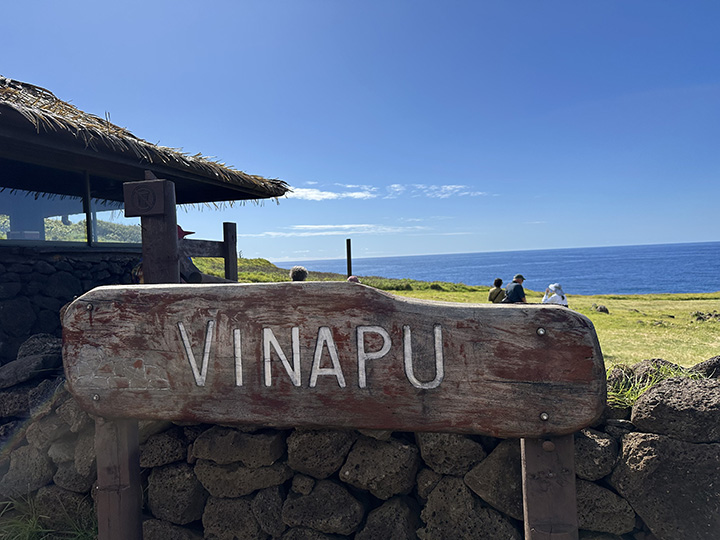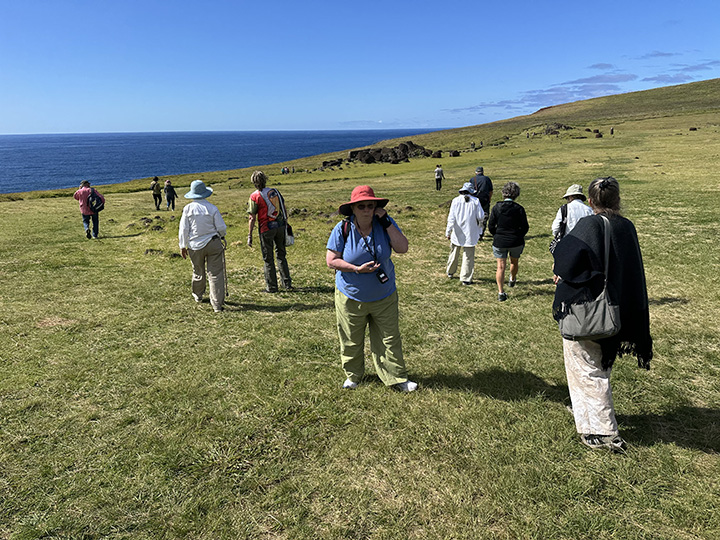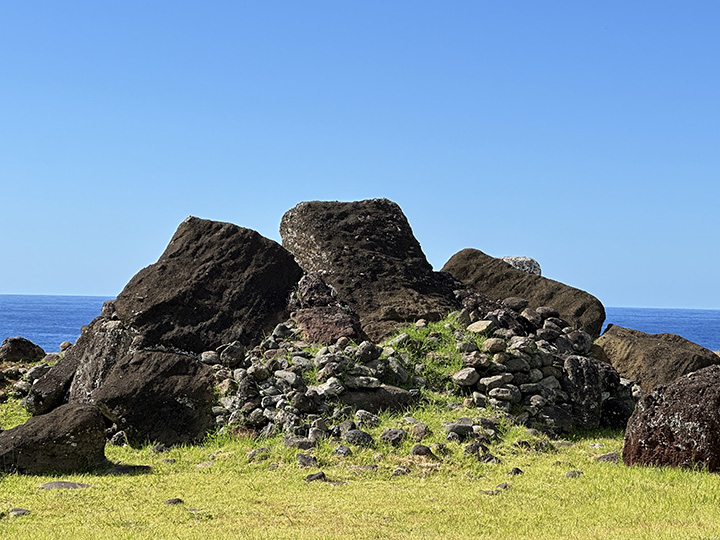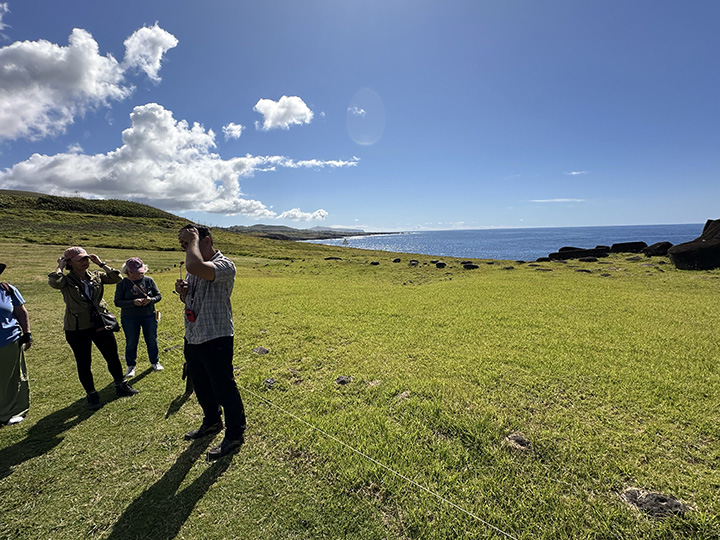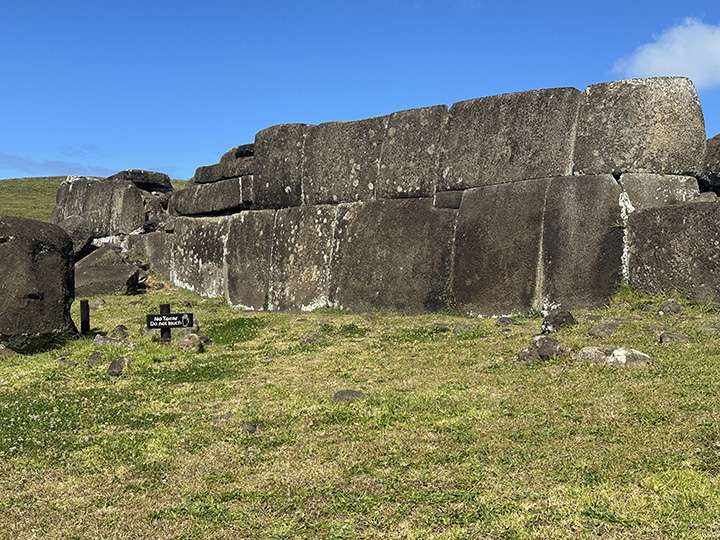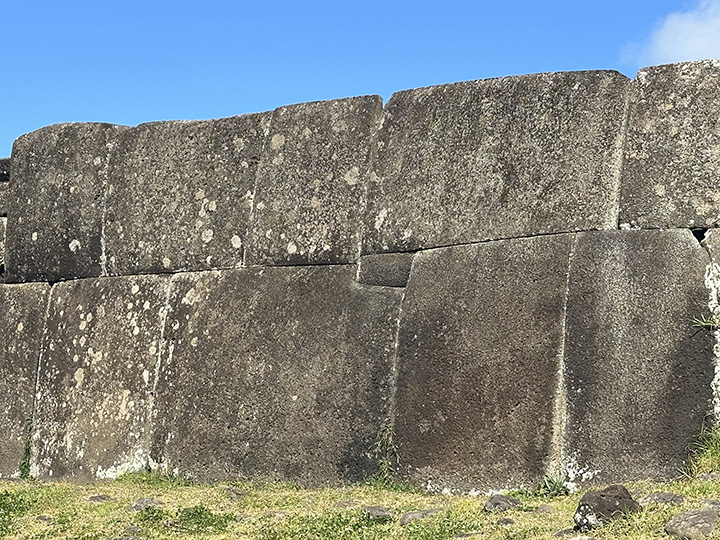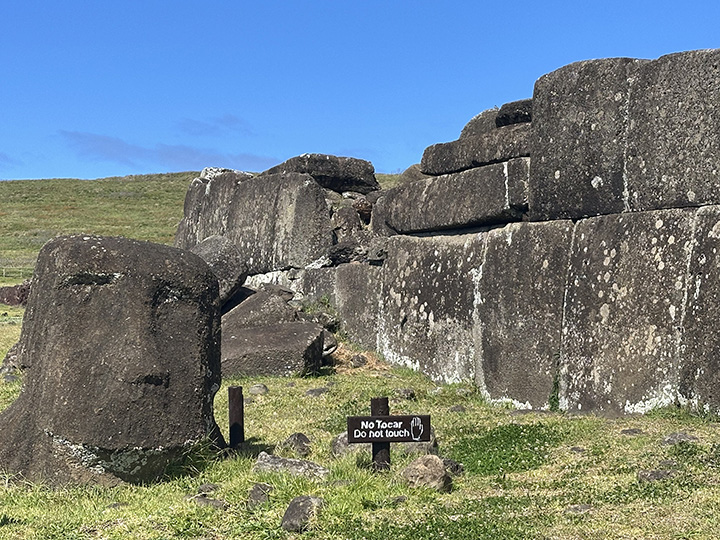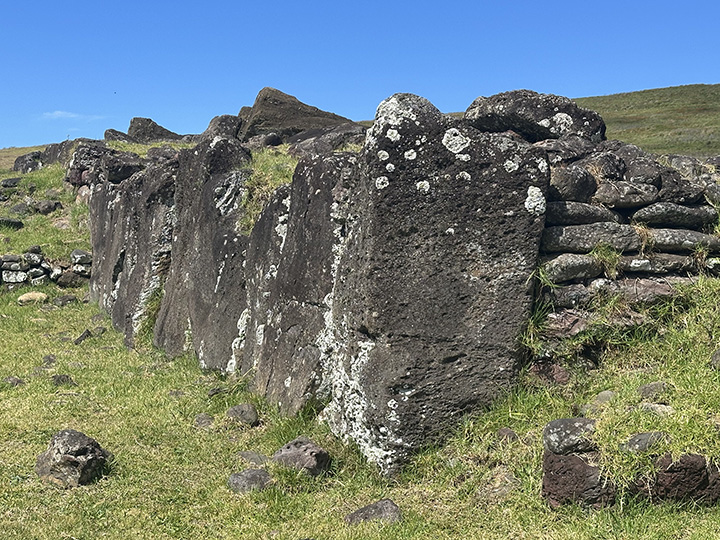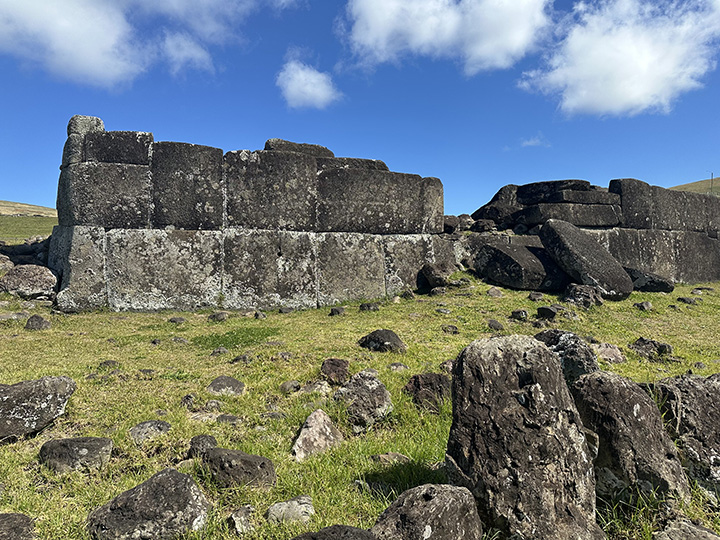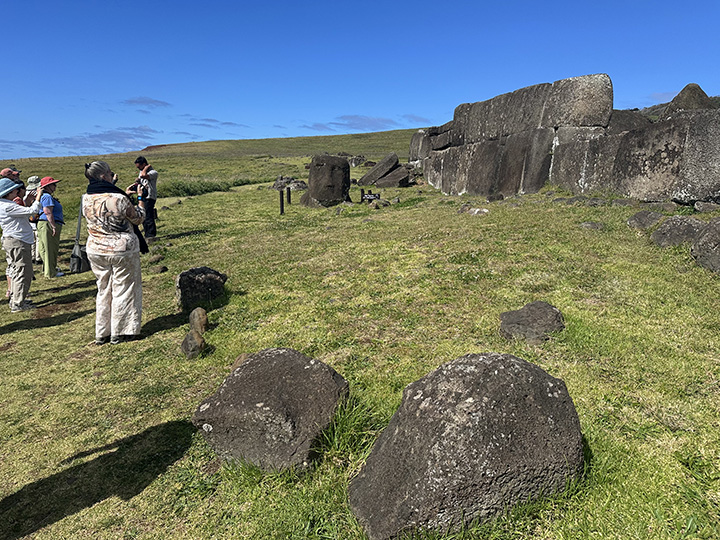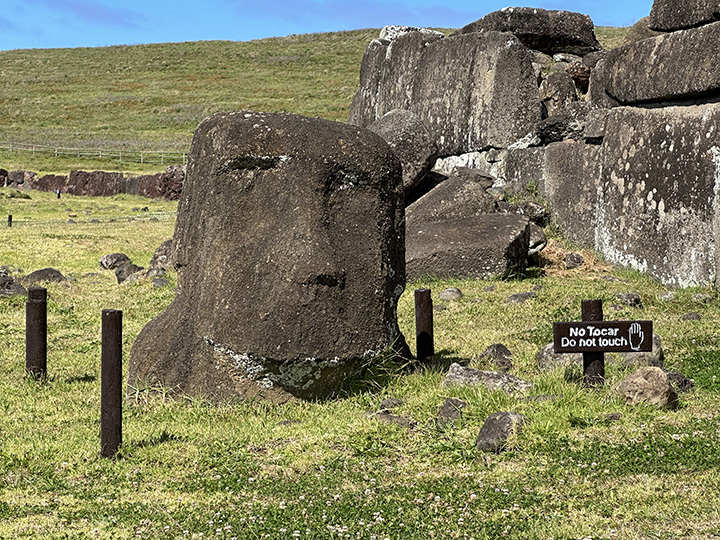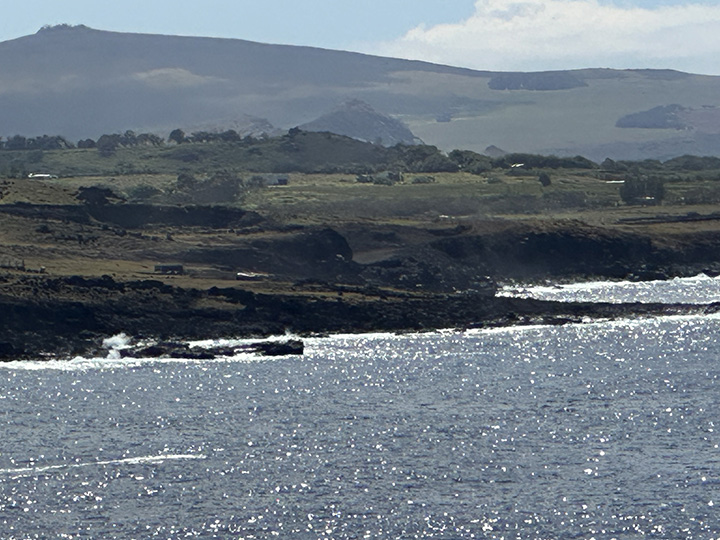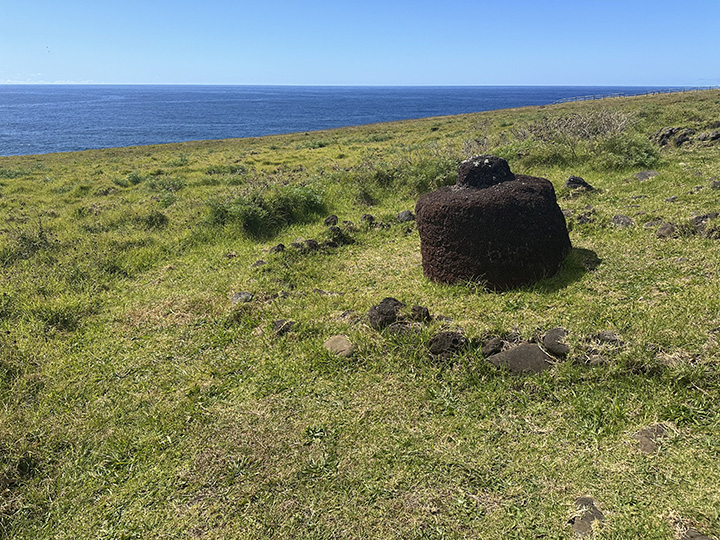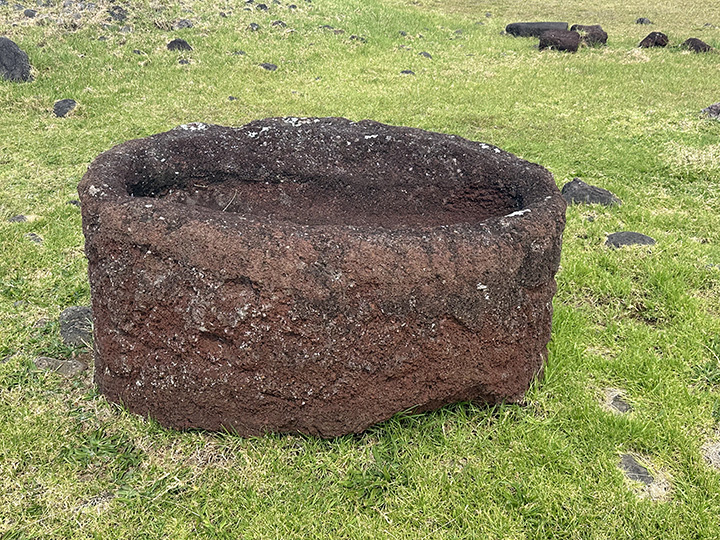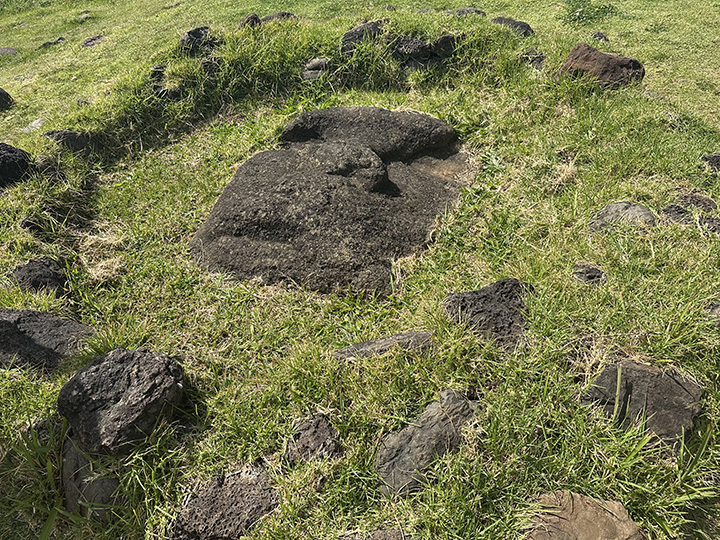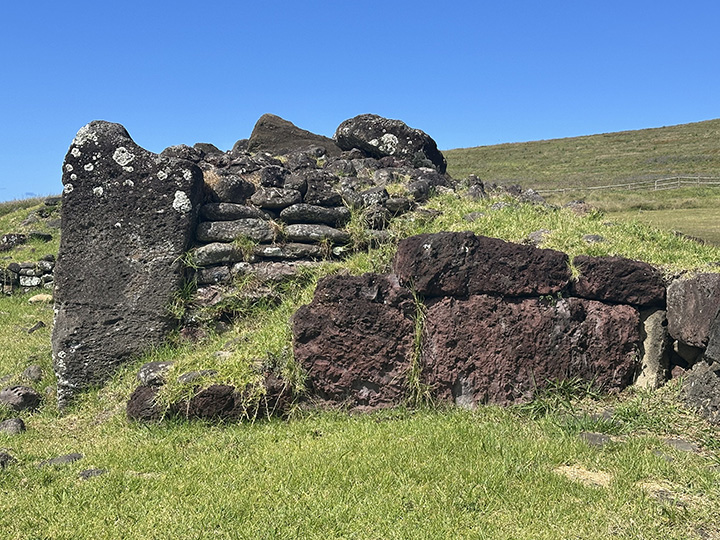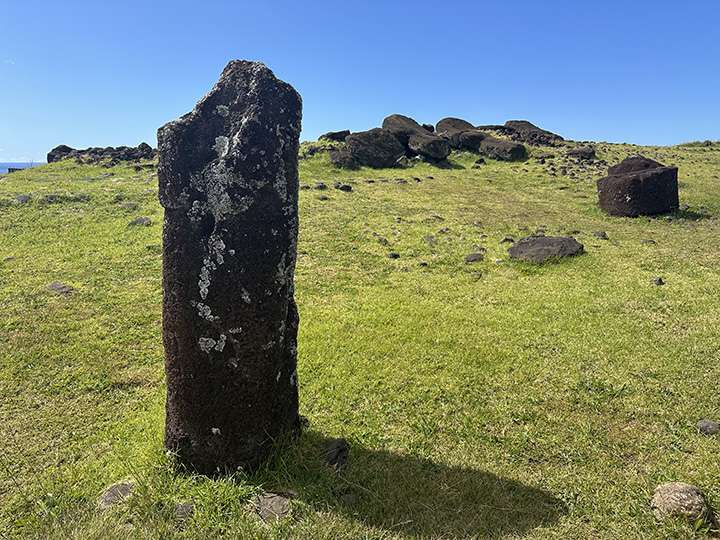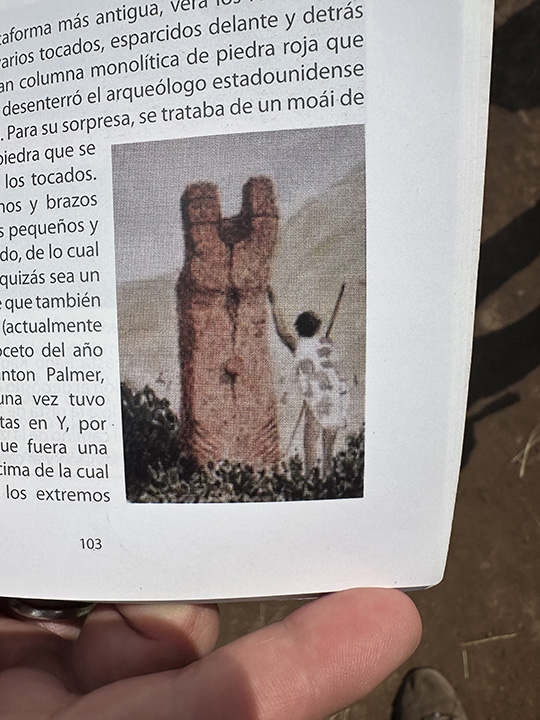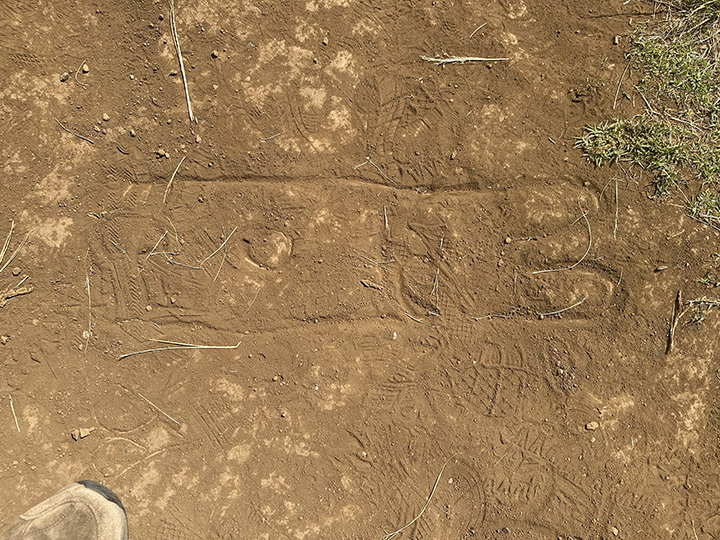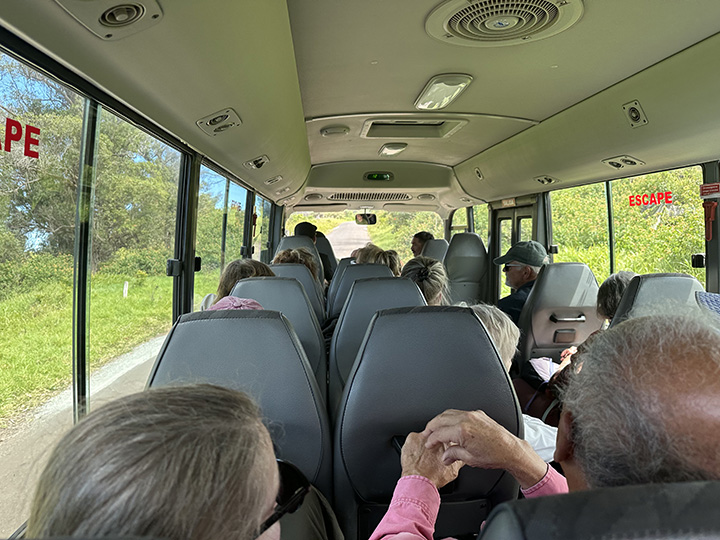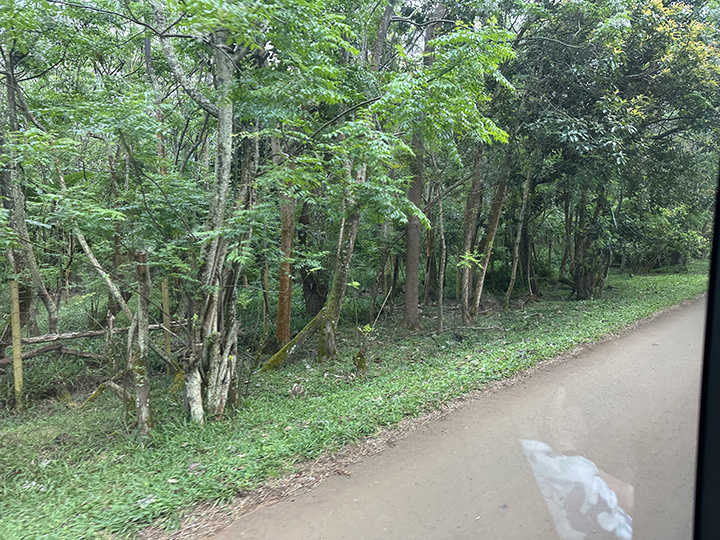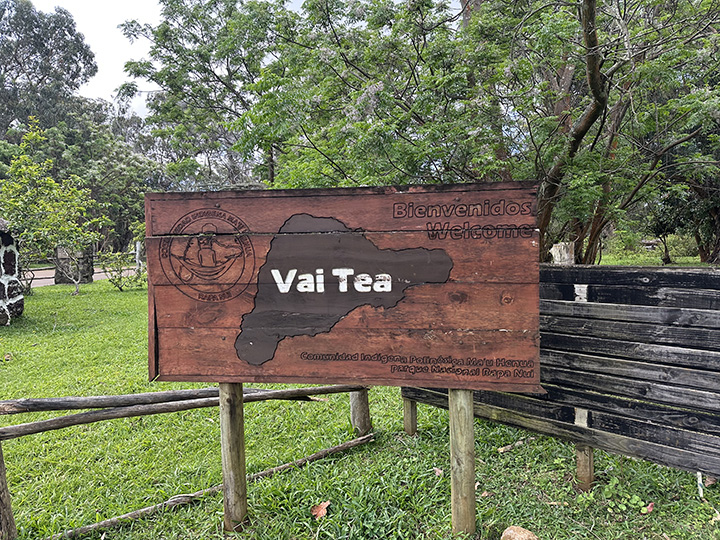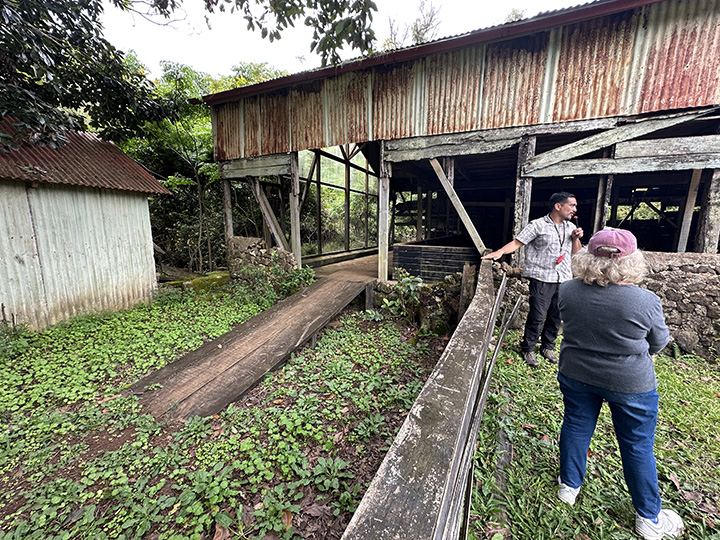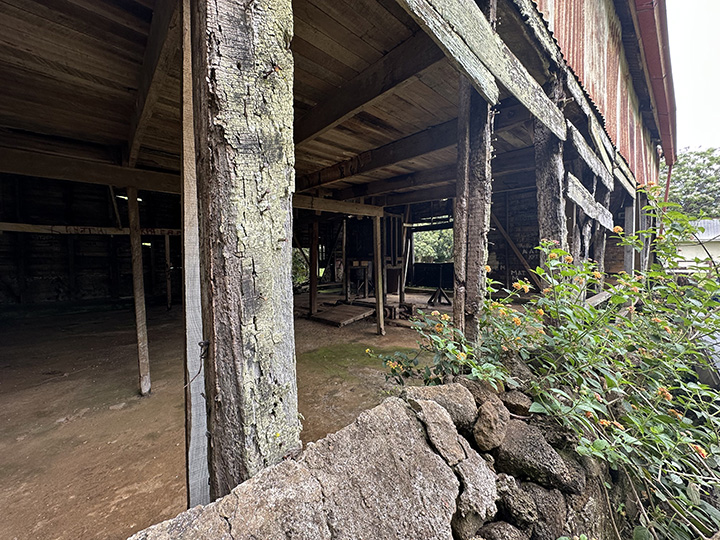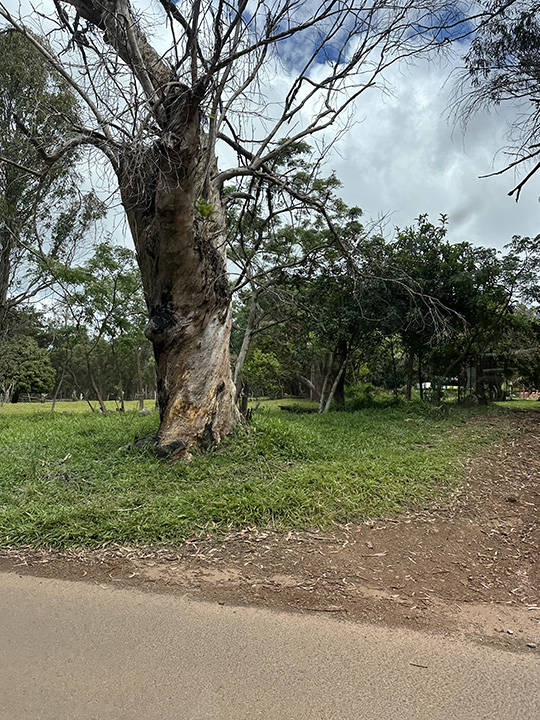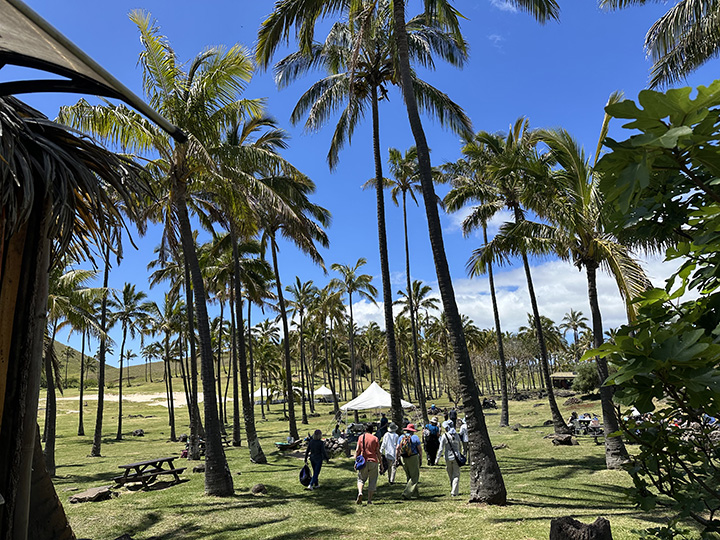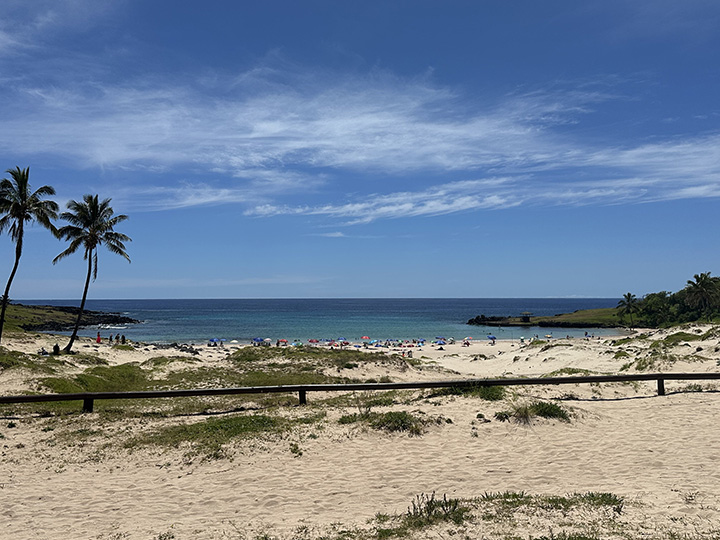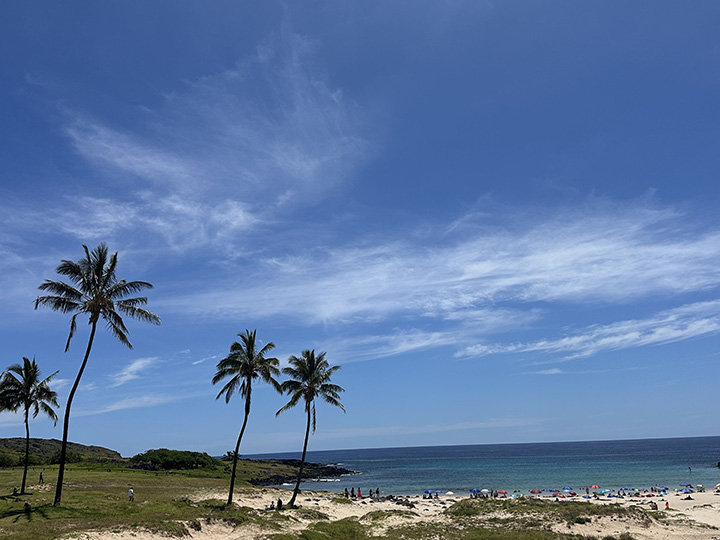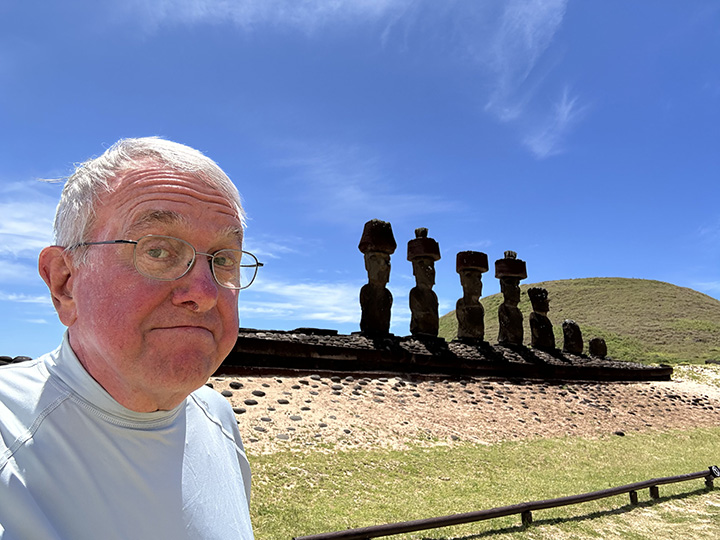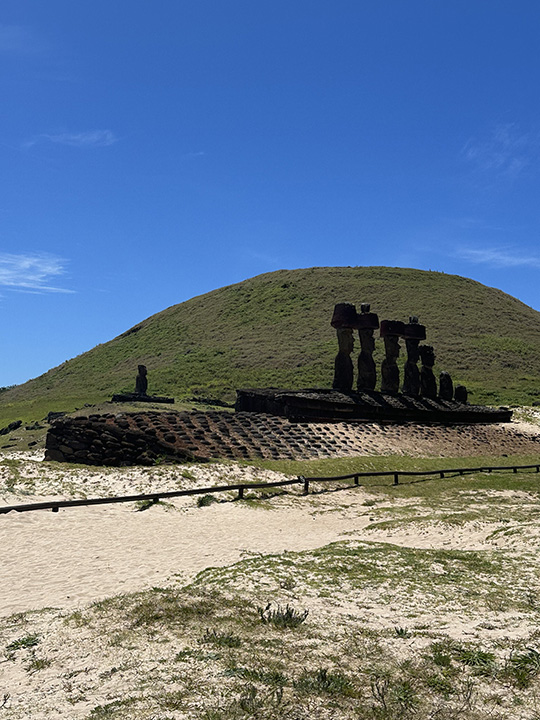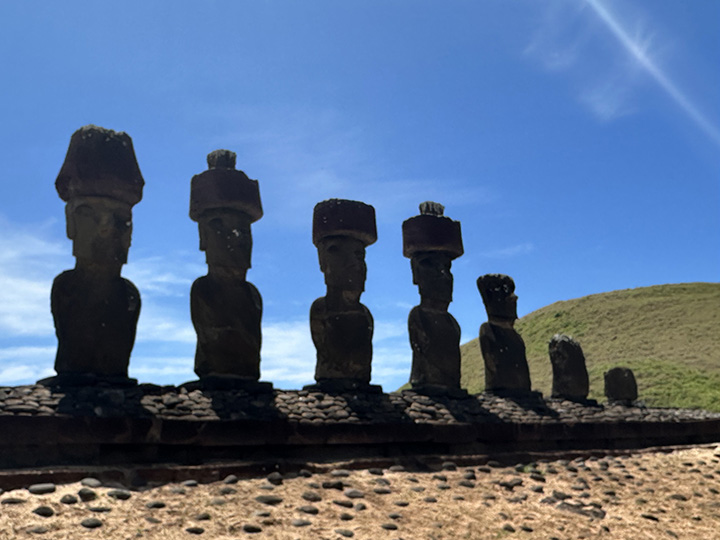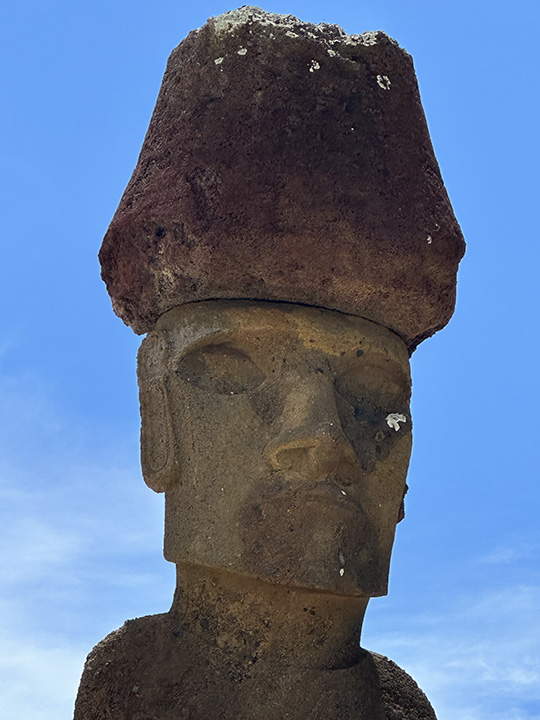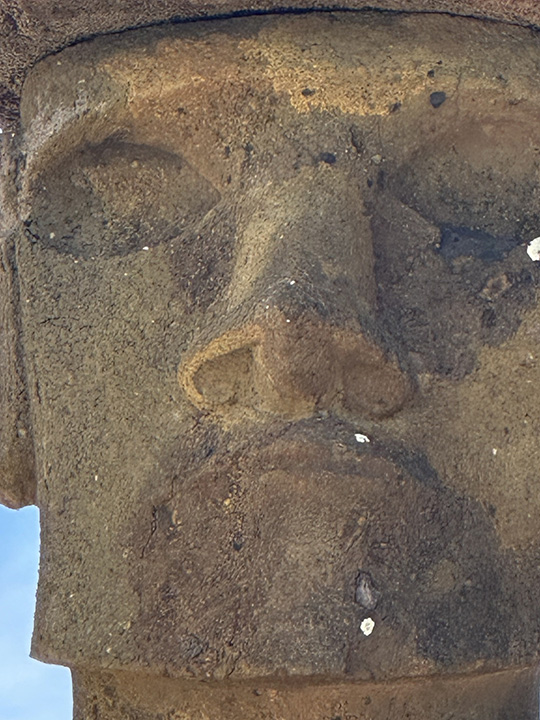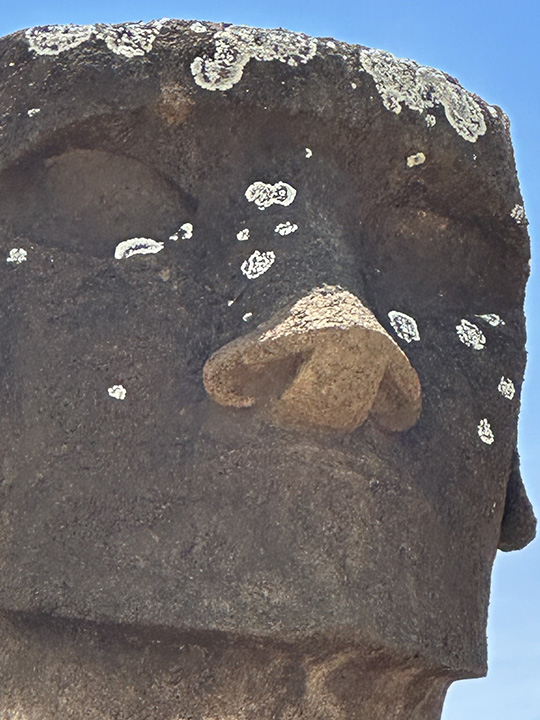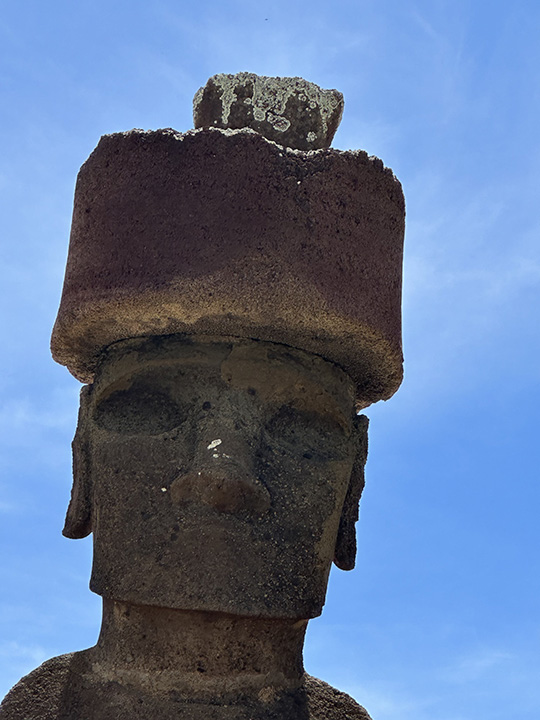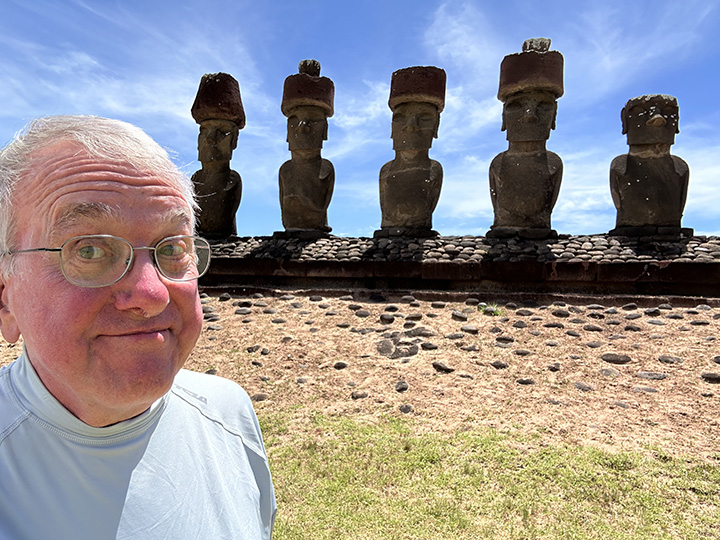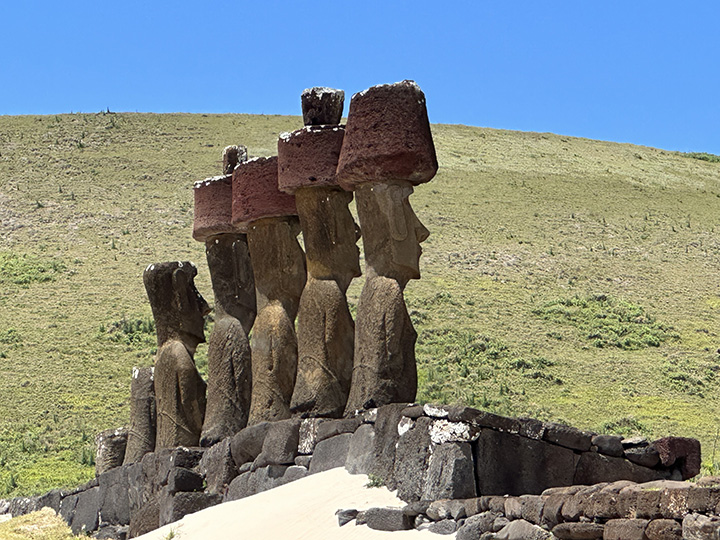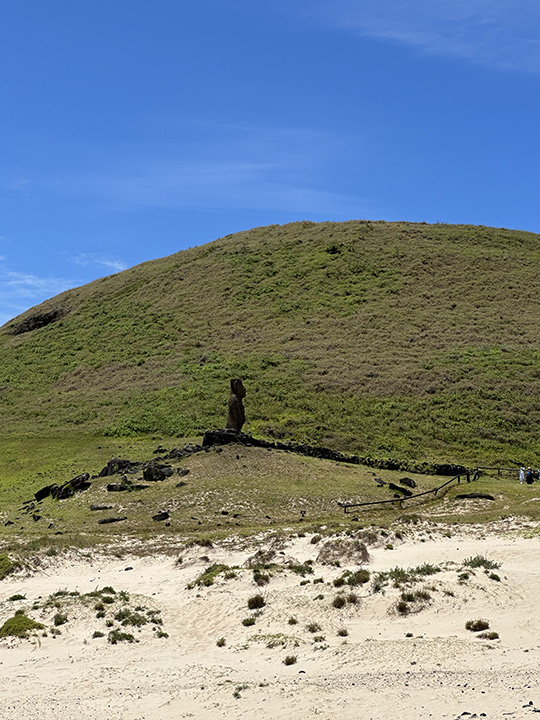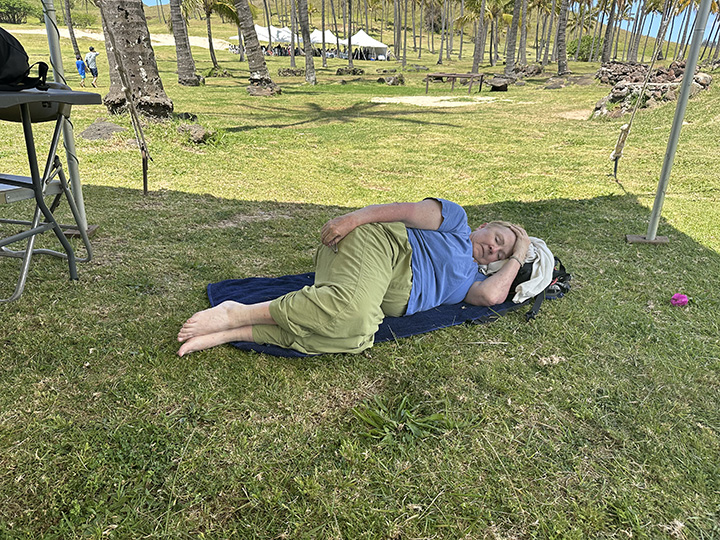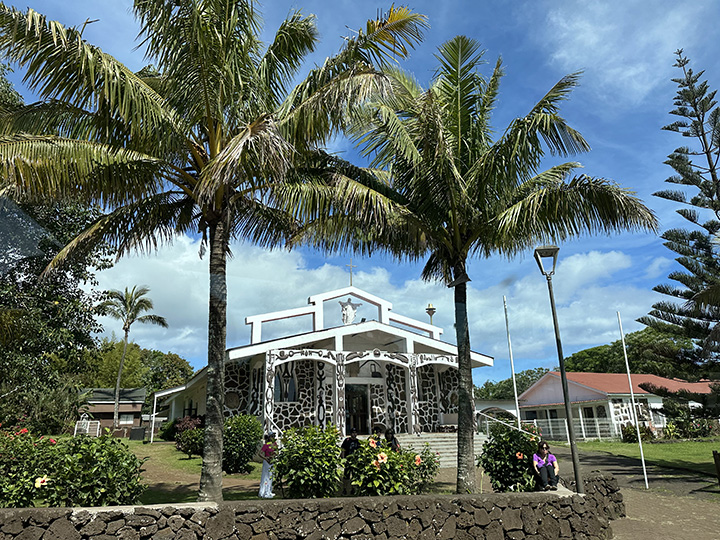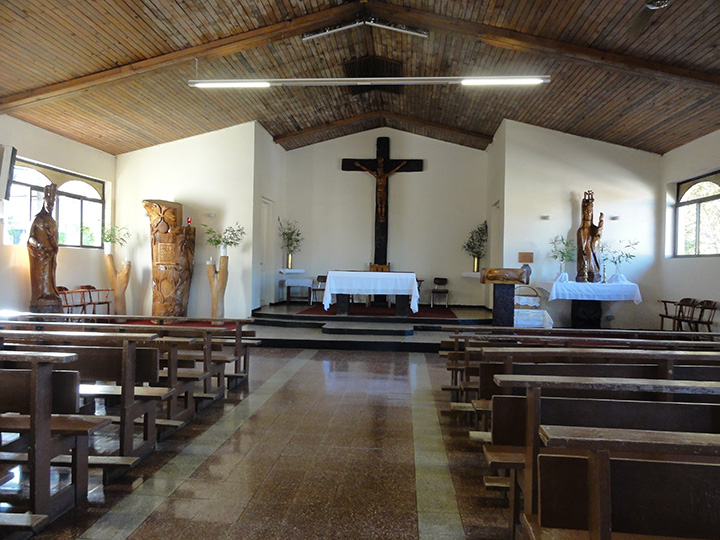|
Another day of exploring a Polynesian island, and this time there's a beach!
Now we're about to explore Ahu Vinapu which is one of the larger ahu on Rapa Nui. Vinapu is part of the Rapa Nui National Park, which UNESCO has declared a World Heritage Site.
It's over there.
Somewhere.
And at least some of it is not in great shape these days.
But Cristian will explain.
The ceremonial center of Vinapu, the ahu, exhibits extraordinary stonemasonry consisting of large, carefully fitted slabs of basalt. The American archaeologist, William Mulloy investigated the site in 1958.
Thor Heyerdahl believed that the accurately fitted stonework at Vinapu showed contact with Peru, especially in comparison to the stone walls of Sacsayhuaman, near Cusco. He was determined to prove that the Incas had come to Rapa Nui with their tools and had constructed this apu. But later archaeology found no sign of those tools. How the wall was constructed is still a bit of a mystery, but the current thinking is that the Aztecs had nothing to do with it.
There's a big difference between the wall at Vinapu and the wall at Sacsayhuaman. There, the walls are formed of giant stone blocks that fit snugly together. Here, the stones may look the same at first glance, but they turn out to be just a facade with rubble piled behind them.
See? They may look great, but they just aren't the same thing. As I've said, Heyerdahl's theories regarding South American influence on Rapa Nui seem not to stand up against the current consensus of opinion.
The stone wall faces towards sunrise at Winter Solstice.
The Road Scholars are hanging on Cristian's every word.
OK, I promise not to tocar. But can I just stand here and absorb the mana?
The moai have a nice view from here. See that volcano cone up there on the left? That's where we hiked yesterday to the moai quarry.
A lonely lost pukao.
And another.
I wonder if one of them belonged on this guy?
An ahu that looks great if you stand in just the right place.
Now here's an interesting moai. It's a rare female with two heads, known as a moai aringa, It's thought she may depict the legendary Easter Island warrior Rav-hiva-aringa-erua. The carving's two heads may represent the all-seeing, all-knowing power of spirits that can survey both the visible and invisible realms. But do you see two heads? I don't see two heads. Somebody must've broken them off, or maybe they just eroded away? How do we know there were ever two heads?
As usual, Cristian has the answer. He revealed that when William Mulloy first saw this poor old broken moai he thought, "Wait a minute...haven't I seen this somewhere before?" So he pored through the collection of reference books he'd brought with him to the island and found this picture, a drawing one of the earliest Dutch explorers had made when westerners first visited Rapa Nui. And now there it was, just lying there in the grass. There wasn't much left of it, but this is what remains of that long-ago mostly forgotten but certainly unique moai. And when I say forgotten, I mean it. Just try to Google up that image Cristian had found reproduced in a Spanish language guidebook. I couldn't find a thing. Also, no matter how hard they look, archaeologists can’t find those heads. The theory is that in an effort to stamp out paganism, Catholic priests broke the heads off. As far as anybody knows, the statue is unique. No other two headed statues have been found. And why two heads? As usual on Easter Island we don't know for sure, but here's some interesting speculation: The double-headed female figure from Rapa Nui (Easter Island) is a rare example that may combine two types of Rapa Nui sculptures:
The figure's carving and ambiguous sexuality may express the duality of the supernatural. The two heads may represent the all-knowing, all-seeing power of omnipotent spirits. The figure also has other features that may indicate her age, aristocracy, and authority:
Oh look! Some enterprising tour guide has drawn in the dirt by the moai a representation of what it looked like in Cristian's illustration. Somebody needs to do right by this remarkable moai, if you ask me.
Enough of that for awhile. Let's find some more recent Rapa Nui history.
Have I mentioned that contrary to what some would have us believe, there really are trees on Easter Island?
Now for a change. Vai Tea isn't an ahu. I've lifted some text from a broken website to explain what we're about to see.
Vaitea is the name given to the area in the center of the Island where there is abundant water coming from the Rano Aroi volcano. Each trip by road to Anakena Beach crosses through the forests of Vaitea, mostly eucalyptus trees, where Islanders will stop to collect wood for their barbecues at the shore. Among the trees, the ruins of an old barn can be seen. This was the shearing shed from the 1920s and some of the houses from the days of the English sheep company, Williamson & Balfour, which leased the Island for half a century (1903–1953).
Cristian is talking about sheep. It may not look like it but I'm paying attention, Cristian, I promise.
According to recollections in that website: Inside the barn, there was a large central corral for the lambs, surrounded by a dozen smaller corrals to keep the animals that had been shorn. 24 shearers could work on 150 to 250 animals per day. A veterinary medic was on hand to check the animals and take care of them in case of injury. The shorn wool would be picked up by women who spread it out on long tables, like a blanket. Others tied it up and classified it according to quality. There was one person who picked up all the bits of wool which fell during the process. Nothing was wasted. At the end, the balers and bale sewers would do their job so that the accountant could weigh them. It was a perfect organization of well defined jobs. We were paid half in money and half in merchandise (candles, matches, sugar, flour, etc.) and animals. But according to the website, the relationship between the foreign owners and the native workers deteriorated and now all attempts at large scale ranching have ceased on the island. It's a long, sad story. You can Google it.
It's a tree. An old one. Eucalyptus maybe I think probably.
Some people say there are no trees on Easter island.
They are wrong about that, but they are right that all the trees
here have been imported. The original palm tree which blanketed the
island is extinct. Well, actually, some seeds were saved in a
museum, and seedlings have been grown. The problem is, the palm
depended upon a fungus to grow tall and strong and the fungus went
extinct when the palm tree did. Maybe someday botanist will be able
to re-introduce the palm tree to Easter Island.
Oh boy, modern civilization with a nice potty. We've arrived at the beach.
But first a picnic among the palms.
The Road Scholars are always ready to picnic.
Once again, yum.
Told you there was a beach. For being a lonesome volcanic rock in the middle of the Pacific Ocean, having a white sandy beach on Rapa Nui is a minor miracle. This is one of only two small sandy beaches in an otherwise rocky coastline.
Some of the Road Scholars took a dip at Anakena Beach.
Bill stuck to examining moai at Anakena Ahu. They say these are some of the best preserved on Easter Island. Actually, they are all starting to look the same, if you want to know the truth about it. But somehow viewing new ones is always exciting. See how excited he is?
These moai had fallen face down in the sand and thus their features were protected over the centuries. Now they have been raised to their rightful places on the ahu.
They are standing proud.
And looking handsome.
According to island oral traditions, Anakena was the landing place of Hotu Matu'a, a Polynesian chief who led a two-canoe settlement party here and founded the first settlement on Rapa Nui.
This guy certainly has a regal bearing.
And this one's got a terrific-looking pukao.
So which one was the founder?
Cristian insisted we walk around and view them from the back so Bill walked around and viewed them from the back.
But he didn't walk over and admire this one.
He was beginning to agree with Martha that it was time for a nap.
And then we drove back to town. That's Hanga Roa's only church, the Holy Cross Church. It's Catholic.
Here's an interior shot I grabbed off the web. The church was established in 1937, its first priest being Father Sebástian Englert. The interior includes locally-carved representations of Jesus Christ, the Virgin Mary and Cristian saints. The building is notable for its external decoration: its façade combines Cristian religious motifs with native elements. The church is set in surrounding gardens. Masses are said in Spanish while hymns are sung in Rapanui. The church's religious services are attended by both local Catholics and tourists attracted by the architecture of the site.
|

